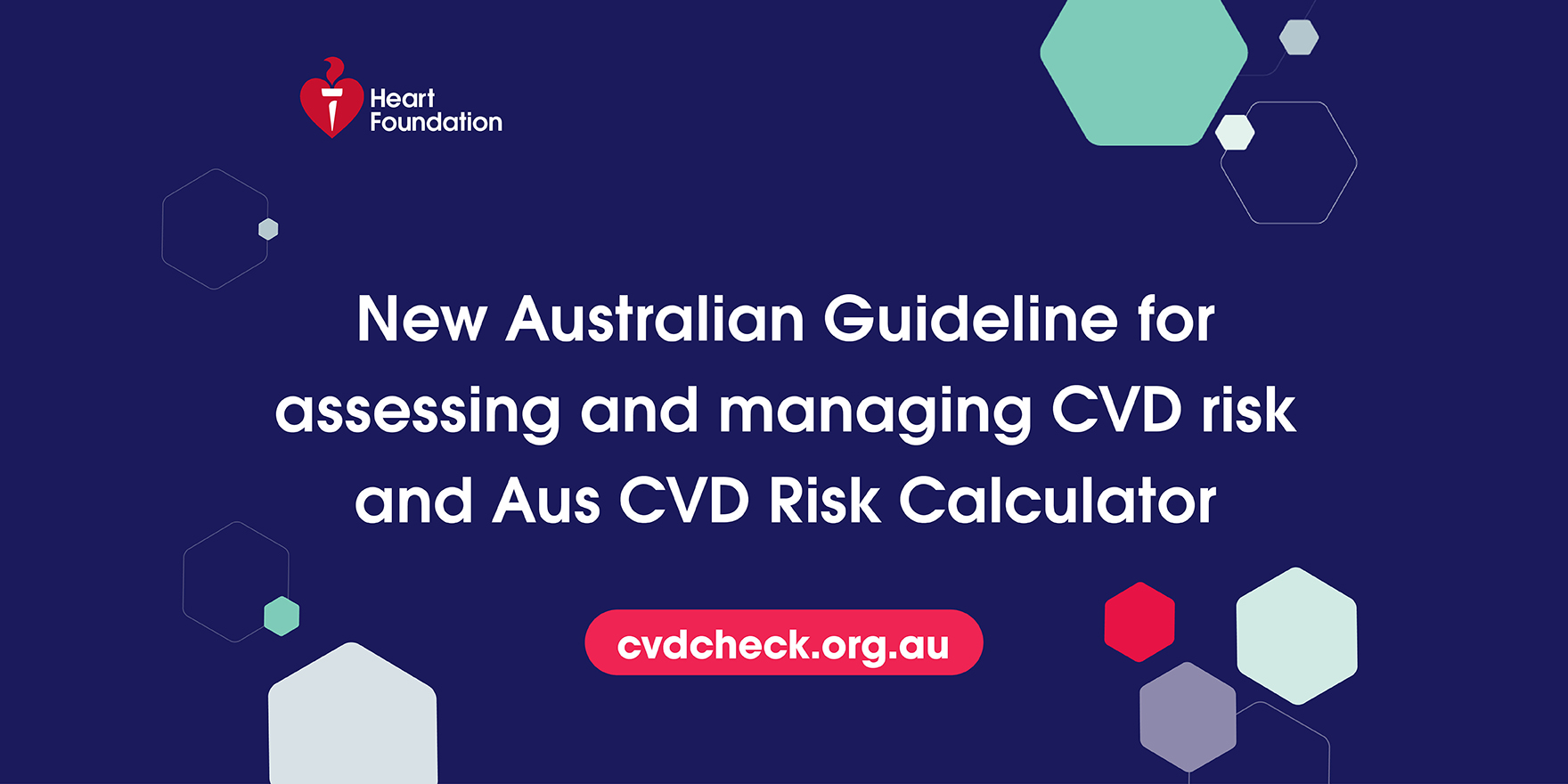What’s new in the guideline? Plus, an opportunity to hear directly from Guideline Expert Steering Group members.
Endorsed by the RACGP, the new guideline provides recommendations, practice advice and resources to support GPs in assessing, communicating and managing their patients’ risk of developing CVD.
Despite improvements in life expectancy and reduced mortality rates, cardiovascular disease (CVD) remains Australia’s biggest killer, taking one Australian life every 12 minutes.1 It costs the economy $5 billion each year, more than any other disease.2
But around 8 million Australians will now benefit from the new guideline and calculator, which allow for more accurate risk assessment and encourage early risk factor modification to reduce cardiovascular events.
Released on 20 July, the 2023 Australian Guideline for assessing and managing cardiovascular disease risk and the associated Australian CVD risk calculator set the new clinical standard for CVD prevention in primary care.
This guideline provides recommendations and practice advice for assessing, communicating and managing CVD risk for the primary prevention of CVD, as well as guidance for using the Aus CVD Risk Calculator. Specific recommendations, resources and practice advice for First Nations are also included throughout.
Endorsed by the RACGP, it is intended for use by GPs, Aboriginal Health Practitioners, nurses, allied health professionals and other professionals who support the primary prevention of CVD.
What’s new in the guideline?
1. Different age groups for risk assessment
A broader range of people without known CVD aged 45 to 79 years are recommended to use?the new Aus CVD Risk Calculator.
Target age ranges for risk assessment have also been tailored according to diabetes and First Nations status (for people without known CVD):
- people with diabetes aged 35–79 years
- First Nations people aged 30–79 years
- First Nations people aged 18–29 years should have their individual risk factors assessed.
2. New Australian CVD risk calculator
The Aus CVD Risk Calculator is based on the PREDICT-1° equation, which was developed from a large New Zealand population cohort study, then recalibrated to the Australian population and modified for the Australian healthcare setting.
It includes optional risk factors not included in the previous Framingham-based equation including geographical area (using postcodes to measure area-level deprivation) and diagnosis of atrial fibrillation.
The new calculator allows for improved CVD risk estimation in people with type 2 diabetes, with a specific sub-equation factoring in glycated haemoglobin (HbA1c), time since diagnosis of diabetes (measured in years), urinary albumin-to-creatinine ratio (uACR), estimated glomerular filtration rate (eGFR), body mass index (BMI) and the use of insulin in the previous 6 months. It can be used for people being treated with blood pressure-lowering, lipid-modifying and/or antithrombotic pharmacotherapy.
3. Redefined risk categories
Risk estimates represent the chance of having a cardiovascular event in the next 5 years. The new risk categories have been redefined according to the new Aus CVD Risk Calculator – they are:
- high (10% risk over 5 years)
- intermediate (5 to <10% risk over 5 years)
- low (<5% risk over 5 years).
The new guideline recommends initiating treatment in people at CVD risk 10%, which is likely to be comparable to the previously recommended >15% risk level calculated using the Framingham equation. This is because it is known, on average, that the Framingham-based equation overestimated CVD risk for the general Australian population.
The redefined categories will help direct management, including encouraging and supporting healthy lifestyles and behaviours, and target pharmacotherapy to those who will benefit most.
4. Reclassification factors
New guidance has been provided on factors that may help clinicians refine risk estimates when using the Aus CVD Risk Calculator. This is particularly relevant for people close to the threshold of another risk category.
Reclassification factors include ethnicity, chronic kidney disease, severe mental illness, coronary artery calcium score and family history of premature CVD.
5. Communicating risk
The guideline has a new emphasis on the importance of communicating CVD risk effectively. To aid shared decision-making between primary care clinicians and patients, risk communication and patient decision support tools have been embedded within the online calculator.
6. Considerations for First Nations peoples
Specific recommendations, resources and practice advice for First Nations have been embedded throughout the guideline.
7. Pregnancy complications
New information is provided about the association between CVD risk and pregnancy complications such as hypertensive disorders of pregnancy (including pre-eclampsia) and gestational diabetes.
Access the new guideline and use the Aus CVD Risk Calculator HERE.
The Heart Foundation, on behalf of the Australian Chronic Disease Prevention Alliance, led this historic project, under the direction and governance of nine expert advisory groups with multidisciplinary clinical and consumer input, to develop recommendations and advice based on the latest evidence.
To hear directly from members of the Guideline Expert Steering Group and uncover the latest evidence that underpins the new guideline recommendations, tune in for the Heart Foundation’s clinical webinar on Wednesday 16 August 2023, live from 7pm AEST.
REGISTER HERE
This webinar has been accredited by the RACGP for 1.5 Educational Activity CPD hours (activity no. 533870).
References
- Australian Bureau of Statistics 2020. Causes of death 2019, cat. n. 3303.0. October.
- Australian Institute of Health and Welfare 2017. Australian Health Expenditure – demographics and diseases: hospital admitted patient expenditure 2004-05 to 2012-13. Supplementary tables. Health Expenditure and Welfare series no. 59. cat. no. HWE 69.




